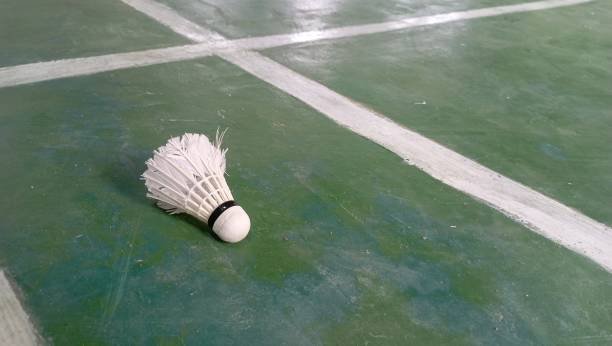Badminton is a globally popular sport, played by both amateur enthusiasts and professional athletes, all of whom have strict requirements regarding court dimensions, layout, and materials. This article will provide a comprehensive analysis of the standard badminton court dimensions, layout details, line markings, and common materials used, with the aim of helping court designers, builders, and users better understand and implement international standards.
1. Standard Dimensions of a Badminton Court

The dimensions of a badminton court are defined by the Badminton World Federation (BWF) and remain consistent across all levels of competition. From youth levels to the Olympic stage, all badminton courts adhere to the same size requirements. These standards ensure fairness and consistency in the sport, providing players with an appropriate space for movement.
- Overall Court Dimensions
- Length: 13.41 meters (44 feet)
- Width: 6.10 meters (20 feet)
- Singles Court Dimensions
- Length: 13.41 meters
- Width: 5.18 meters (17 feet)
- Doubles Court Dimensions
- Length: 13.41 meters
- Width: 6.10 meters (20 feet)
- Safety Boundaries and Space Requirements
- While the BWF recommends a minimum of 61 cm (2 feet) of safety space around the court, many countries, particularly in the Commonwealth, require at least 2 meters of clearance between the court and walls or obstacles. This is to ensure players have enough space to move freely and reduce the risk of injury.
2. The Net and Court Line Markings

The lines and net setup on a badminton court are critical for fair play. Different types of matches (singles and doubles) have different court divisions to make the rules clear and enforceable.
- Net Specifications
- The height of the net at the edges of the court is 1.55 meters (5.09 feet); at the center of the court, it is 1.524 meters (5 feet). These height standards ensure consistency in every match, providing equal conditions for all players.
- Court Line Markings
- Outer Sidelines: These mark the outer boundary of the court and define the width of the doubles court. The length of these sidelines is 13.41 meters (44 feet) and runs parallel to the baseline.
- Inner Sidelines: These are the boundaries for singles play, located 0.46 meters (1.5 feet) inside the outer sidelines. Any shuttlecock landing outside these lines is considered out.
- Baseline (Back Line): This marks the farthest edge of the court. Any shuttlecock landing outside the baseline is considered out, whether in singles or doubles play.
- Short Service Line: This line is located 1.98 meters (6.5 feet) from the net and marks the boundary of the effective service area. A serve must pass this line to be valid.
- Centerline and Service Areas
- Centerline: This line divides the court into left and right service areas, which are used for both singles and doubles service. For singles, the service area is longer and narrower; for doubles, it is shorter and wider.
- Doubles Service Line: This line is closer to the baseline, typically about 76 cm (2.5 feet) from the back line. It defines the service area in doubles matches.
3. Materials Used for Badminton Court Surfaces

The choice of materials for a badminton court plays a crucial role in the quality of the game and the performance of athletes. Different materials offer varying levels of grip, comfort, and safety.
- Synthetic Materials (PVC/PU)
- Synthetic materials such as PVC or PU are the preferred choices for high-end badminton courts, especially in international competitions. These materials provide excellent grip, reducing the risk of players slipping during intense movements.
- Synthetic courts often offer better shock absorption, which helps protect players' knees and joints, especially in high-intensity matches.
- Wooden Courts
- Wooden floors are commonly found in some amateur badminton courts, providing a comfortable surface with good elasticity. However, compared to synthetic surfaces, wooden courts may have slightly less grip and can wear down over time with frequent use.
- Asphalt Courts
- Asphalt courts are sometimes found in outdoor settings, but they are generally not recommended for regular competition. The hard surface can cause joint strain, and the lack of grip increases the likelihood of players slipping.
4. Vertical Clearance for Badminton Courts

In addition to horizontal space requirements, a badminton court must meet certain vertical clearance standards, particularly in indoor courts. To avoid shuttlecocks hitting the ceiling or other obstructions, the BWF specifies a minimum vertical clearance of 9.14 meters (30 feet). For large-scale events, the vertical clearance requirement may rise to 11.88 meters (39 feet).
5. Conclusion
Designing and constructing a badminton court that meets international standards involves considering many factors. From the court dimensions, net and line layout, to material choices and vertical clearance, every detail affects the quality of the game and the players' performance. Whether for amateur enthusiasts or professional competitors, understanding the standards for badminton court design is essential. With careful planning and material selection, courts can be created to ensure safety, comfort, and optimal conditions for players, providing the best possible competitive experience.